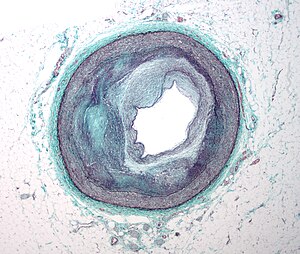Dr. Daniel Amen is one of my favorite sources of information on Brain Health. He started to espouse the notion that brain disorders can be mitigated through lifestyle changes, nutrition, supplements and exercise long before it became fashionable for the medical establishment to embrace this approach. He has been at the fore front of the movement to help people with brain injuries and brain disorders to live more productive lives. The article below is his latest web posting on brain health.
Healthy Shortcuts to Better Brain & Body Health
 Every
day we’re bombarded by family, friends, doctors and talk show health
experts telling us about the newest and latest info that will change our
lives and make us healthier and happier. We’re told everything from:
stop eating artificial sweeteners, eat wild fish three times a week, do
yoga, take a multi-vitamin, sleep eight hours a night, walk 10,000 steps
a day. The list goes on and on, and it’s virtually impossible to do
everything, every day and perfectly.
Every
day we’re bombarded by family, friends, doctors and talk show health
experts telling us about the newest and latest info that will change our
lives and make us healthier and happier. We’re told everything from:
stop eating artificial sweeteners, eat wild fish three times a week, do
yoga, take a multi-vitamin, sleep eight hours a night, walk 10,000 steps
a day. The list goes on and on, and it’s virtually impossible to do
everything, every day and perfectly.As healthy as we all want to be, life has its challenges and there just aren’t enough hours in the day to do it all. Below is a list of ways to do “good for you” things. There are 10 easy shortcuts that will keep you healthy and not take up a lot of your time.
- Eat breakfast. It’s the most important meal of the day. It speeds up your metabolism and gives you the energy you need. Shortcut: Keep a dozen of boiled eggs in the refrigerator, spread almond butter on a piece of Ezekiel toast, eat low-fat plain yogurt with thawed frozen berries and a sprinkle of stevia, have a piece of fruit with 10 raw almonds.
- Eat more fruits and veggies. They
are a key part of our everyday diet. Everyone needs 5 to 9 daily
servings for the nutrients they contain and for general health. Shortcut:
Cut up fruit and veggies and put in zip lock baggies for easy on-the-go
snacks, keep your kitchen counter fruit bowl always full, add more
veggies to salads, and make a pot of vegetable soup in the crockpot on
Sunday for easy during the week meals.
- Drink 8 glasses of water a day. Water is vital for maintaining body functions and is essential for health. Shortcut:
Drink one glass of water every time you walk into the kitchen, drink
from a straw- you automatically drink more, keep bottled water in your
car, eat high water content fruits and veggies.
- Fish. Is high in protein,
vitamins, minerals and omega-3 fatty acids, and can reduce some problems
associated with PMS, memory loss, cardiovascular disease, colon cancer
and stroke. Shortcut: Buy canned fish with an easy to pop lid
or in a packet, buy sardines (very affordable), eat foods like walnuts,
flax seeds and chia seeds that are high in omega-3 fatty acids.
- Cardio exercise. Research shows that cardiovascular exercise fitness helps protect against heart disease. As fitness increases, the incidence goes down. Shortcut: Instead of committing to 30 minutes at one time, take three 10-minute brisk walks each day. Devote 10 minutes at lunch, 10 minutes in the afternoon and 10 minutes before or after dinner.
Disclaimer: The statements regarding the nutritional and medicinal properties of the various foods have not been evaluated by the Food and Drug Administration. These items are not intended to diagnose, treat, cure, or prevent any disease. Please consult your own physician for guidance regarding your health and nutrition.


 Inspiration
often comes in unexpected ways. In Mark Siminoff’s case, gazing at his
curbside garbage one morning caused him to suddenly feel the guilt of
fatherhood—not for bringing two children into the world, but for the
amount of waste they created in the form of dirty disposable diapers. “I
wasn’t living a sustainable lifestyle,” he says. “As a daddy, I wasn’t
being responsible.”
Inspiration
often comes in unexpected ways. In Mark Siminoff’s case, gazing at his
curbside garbage one morning caused him to suddenly feel the guilt of
fatherhood—not for bringing two children into the world, but for the
amount of waste they created in the form of dirty disposable diapers. “I
wasn’t living a sustainable lifestyle,” he says. “As a daddy, I wasn’t
being responsible.” Many women turn to
Many women turn to 



